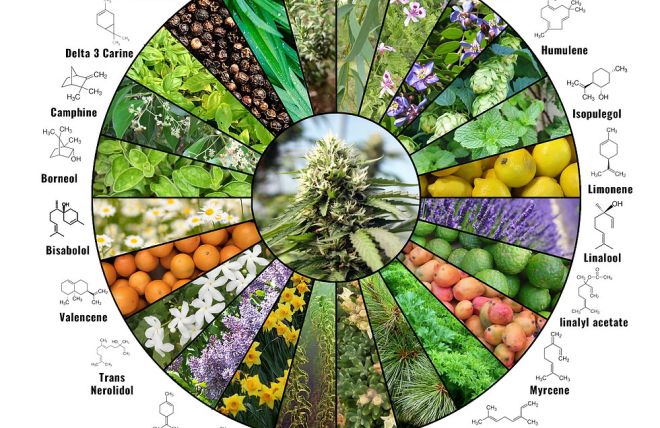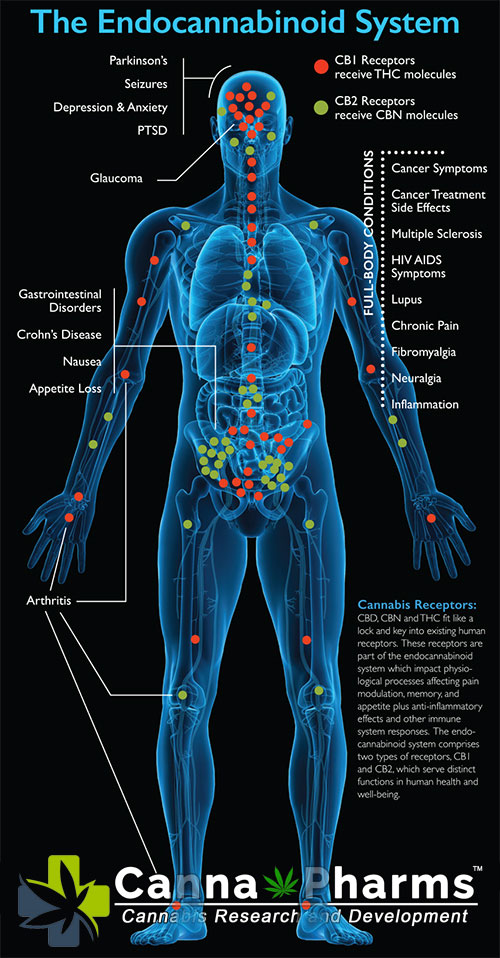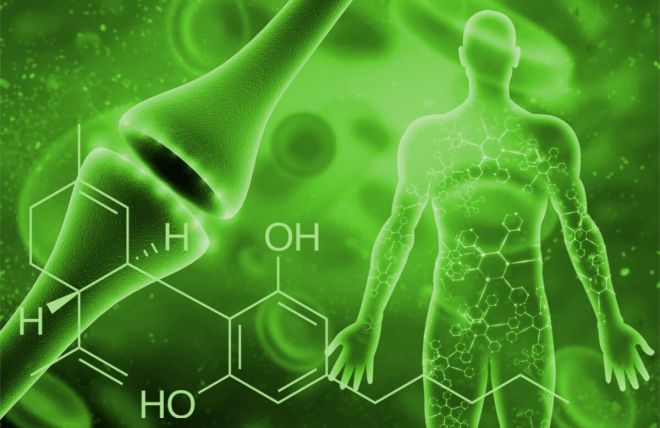Abstract: Amyotrophic Lateral Sclerosis (ALS), also known as Lou Gehrig's disease, is a progressive neurodegenerative disorder characterized by the degeneration of motor neurons, leading to muscle weakness, paralysis, and ultimately, death. Current treatment options are limited, and a significant need exists for effective therapies to alleviate symptoms and improve quality of life. The endocannabinoid system (ECS) has emerged as a promising therapeutic target in ALS due to its neuroprotective, anti-inflammatory, and muscle relaxant properties. This paper explores the significant role the ECS plays in modulating ALS symptoms, with a focus on the potential of the entourage effect, leveraging synergistic interactions between multiple cannabinoids, and the benefits of targeted cannabinoid therapies designed to address specific symptomatic challenges.
1. Introduction:
ALS is a devastating disease affecting motor neurons in the brain and spinal cord. The etiology of ALS is complex and multifactorial, involving oxidative stress, glutamate excitotoxicity, mitochondrial dysfunction, protein aggregation, and neuroinflammation. While riluzole and edaravone are FDA-approved treatments for ALS, they offer only modest benefits in slowing disease progression. Therefore, alternative and complementary therapies are being actively investigated, with the endocannabinoid system (ECS) gaining considerable attention.
The ECS is a complex signaling system composed of endogenous cannabinoids (endocannabinoids) such as anandamide (AEA) and 2-arachidonoylglycerol (2-AG), cannabinoid receptors (CB1 and CB2), and enzymes that synthesize and degrade endocannabinoids. The ECS plays a crucial role in regulating various physiological processes, including pain perception, motor control, neuroinflammation, and neuroprotection. Emerging evidence suggests that modulating the ECS can offer therapeutic benefits in neurodegenerative diseases, including ALS.
2. The ECS in ALS: Evidence for Symptom Modulation:
Evidence from preclinical studies and patient reports indicates that the ECS plays a significant role in modulating several key ALS symptoms:
Neuroprotection: Studies have demonstrated that activation of CB1 and CB2 receptors can exert neuroprotective effects by reducing oxidative stress, inhibiting glutamate excitotoxicity, and promoting neuronal survival. For instance, CB2 receptor activation has been shown to reduce microglial activation, a major driver of neuroinflammation in ALS.
Muscle Spasticity and Cramps: Muscle spasticity and cramps are common and debilitating symptoms in ALS patients. Activation of CB1 receptors in the central nervous system can reduce muscle tone and alleviate spasticity by modulating neurotransmitter release and inhibiting motor neuron excitability.
Pain Management: Chronic pain is a significant problem for many ALS patients due to muscle cramps, joint stiffness, and nerve damage. The ECS plays a crucial role in pain modulation through CB1 and CB2 receptor activation in the central and peripheral nervous systems. Cannabinoids can reduce pain by inhibiting the release of pro-inflammatory mediators and modulating pain signaling pathways.
Appetite Stimulation and Weight Management: Weight loss and malnutrition are common complications in ALS due to dysphagia (difficulty swallowing) and reduced appetite. The ECS, particularly through CB1 receptor activation, can stimulate appetite and increase food intake.
Anxiety and Depression: ALS patients often experience anxiety and depression due to the progressive nature of the disease and the loss of motor function. The ECS modulates emotional processing and can influence mood by regulating neurotransmitter systems such as serotonin and dopamine.
3. The Entourage Effect: Harnessing Synergistic Cannabinoid Interactions:
The "entourage effect" refers to the synergistic interaction between different cannabinoids, terpenes, and other compounds present in cannabis. This concept suggests that the therapeutic effects of cannabis are not solely attributable to individual cannabinoids like THC or CBD but rather result from the combined action of multiple constituents.
In the context of ALS, the entourage effect may offer a more comprehensive and effective approach to symptom management compared to using single isolated cannabinoids. For example:
THC and CBD: While THC can effectively reduce muscle spasticity and stimulate appetite, it can also cause anxiety and psychoactive effects in some individuals. CBD can counteract some of these adverse effects while also offering its own benefits, such as reducing inflammation and anxiety. The combination of THC and CBD can thus provide a more balanced and tolerable therapeutic profile.
Cannabinoids and Terpenes: Terpenes, the aromatic compounds found in cannabis, also possess therapeutic properties and can interact with cannabinoids to enhance their effects. For instance, myrcene has muscle relaxant and analgesic properties, while limonene can elevate mood and reduce anxiety. Combining cannabinoids with specific terpenes can tailor the therapeutic effects to address specific ALS symptoms.
Minor Cannabinoids: Cannabinoids beyond THC and CBD, such as cannabigerol (CBG) and cannabinol (CBN), are also showing promise. CBG has demonstrated neuroprotective and anti-inflammatory properties, potentially aiding in slowing disease progression. CBN has sedative effects, potentially helpful for managing insomnia, a common symptom in ALS.
The entourage effect emphasizes the importance of using whole-plant extracts or formulations containing a diverse range of cannabinoids and terpenes to maximize therapeutic benefits in ALS.
4. Targeted Cannabinoid Therapies for Specific ALS Symptoms:
While the entourage effect offers a holistic approach, certain cannabinoids may be particularly effective in targeting specific ALS symptoms. A targeted approach involves tailoring cannabinoid therapies to address the unique symptom profile of each patient.
Muscle Spasticity and Cramps: THC, in combination with CBD, is often used to reduce muscle spasticity and cramps. The ratio of THC to CBD can be adjusted to optimize therapeutic effects while minimizing adverse effects.
Pain Management: A combination of THC, CBD, and terpenes with analgesic properties (e.g., myrcene) can provide effective pain relief. Topical cannabinoid creams and oils can also be used to target localized pain.
Appetite Stimulation and Weight Management: THC is a well-known appetite stimulant. However, careful titration of THC is necessary to avoid excessive psychoactive effects. CBD can also indirectly improve appetite by reducing nausea and anxiety.
Anxiety and Depression: CBD has demonstrated anxiolytic and antidepressant effects. Terpenes such as limonene and linalool can further enhance mood and reduce anxiety.
Neuroprotection: CB2 receptor agonists, such as synthetic cannabinoids or selective CB2 activators, hold promise for neuroprotection by reducing neuroinflammation. Minor cannabinoids like CBG also warrant further investigation for their neuroprotective potential.
The selection of specific cannabinoids and their ratios should be guided by individual patient needs and responses, with careful monitoring and adjustments to optimize therapeutic outcomes.
5. Challenges and Future Directions:
Despite the promising potential of the ECS in modulating ALS symptoms, several challenges need to be addressed:
Limited Clinical Evidence: While preclinical studies and anecdotal evidence suggest therapeutic benefits, well-designed clinical trials are needed to confirm the safety and efficacy of cannabinoid-based therapies in ALS patients.
Variability in Individual Responses: Individual responses to cannabinoids can vary widely depending on factors such as genetics, metabolism, and disease severity. Personalized approaches to cannabinoid therapy are necessary.
Lack of Standardized Formulations: The lack of standardized cannabinoid formulations and dosage recommendations makes it difficult to conduct rigorous clinical trials and provide consistent therapeutic outcomes.
Regulatory Hurdles: The legal status of cannabis and cannabinoids varies across different jurisdictions, which can hinder research and access to these therapies.
Potential Adverse Effects: Cannabinoids can cause adverse effects such as dizziness, drowsiness, dry mouth, and anxiety. Careful titration and monitoring are essential to minimize these effects.
Future research should focus on:
Conducting large-scale, randomized, placebo-controlled clinical trials to evaluate the efficacy of specific cannabinoid-based therapies in ALS.
Identifying biomarkers that can predict individual responses to cannabinoids.
Developing standardized cannabinoid formulations with consistent potency and purity.
Investigating the mechanisms of action of cannabinoids in ALS and identifying new therapeutic targets within the ECS.
Exploring the potential of combining cannabinoid therapies with other ALS treatments, such as riluzole and edaravone.
6. Conclusion:
The ECS plays a significant role in modulating several key symptoms of ALS, including muscle spasticity, pain, appetite loss, and anxiety. The "entourage effect," leveraging synergistic interactions between multiple cannabinoids and terpenes, offers a promising approach to comprehensive symptom management. Targeted cannabinoid therapies, tailored to address specific patient needs, can further optimize therapeutic outcomes. While challenges remain, ongoing research and clinical trials are paving the way for the development of effective and safe cannabinoid-based therapies to improve the quality of life for individuals living with ALS. The ECS, with its multifaceted influence on neuroprotection, inflammation, and symptomatic relief, holds significant promise as a therapeutic avenue in the fight against this devastating disease.






